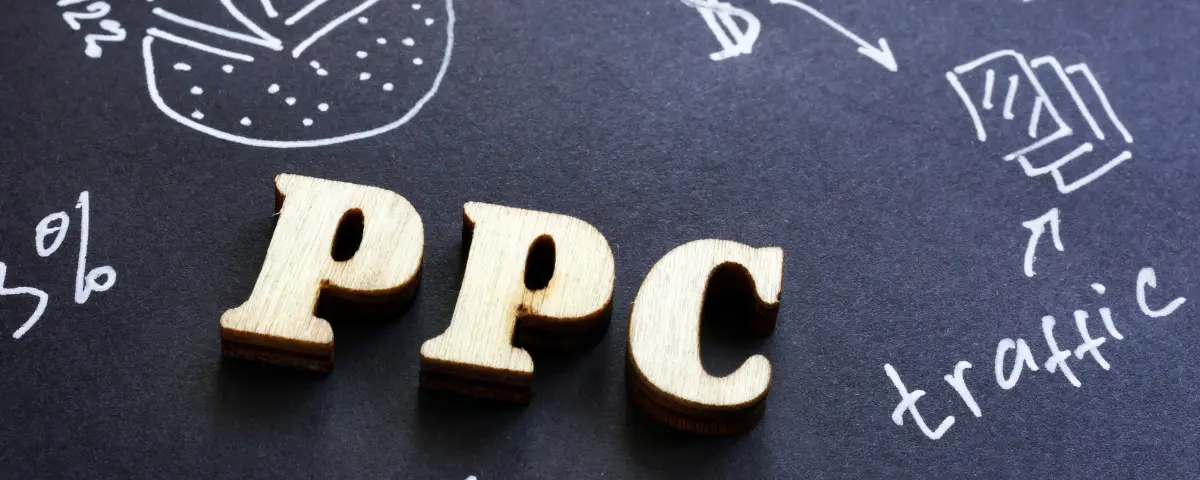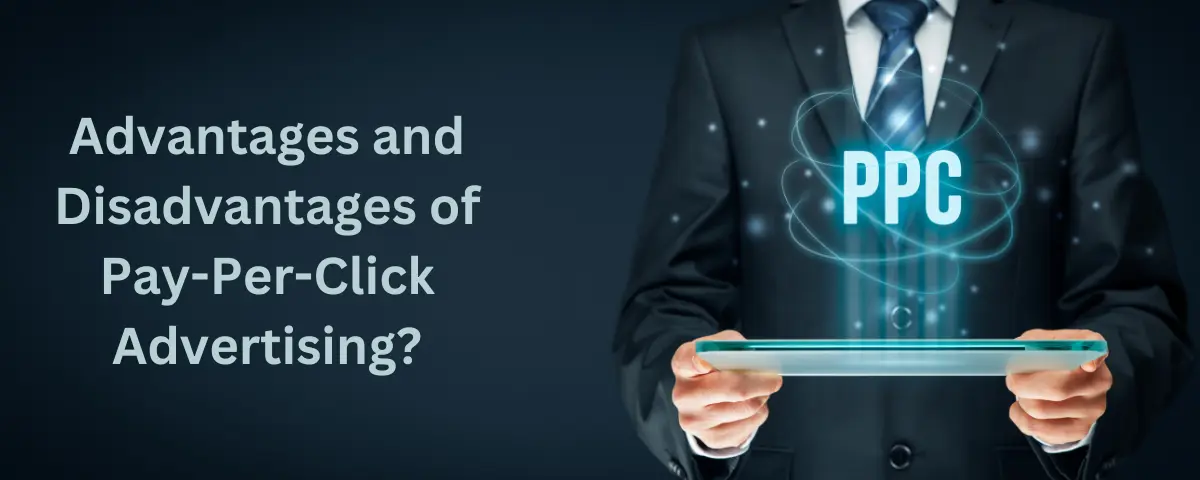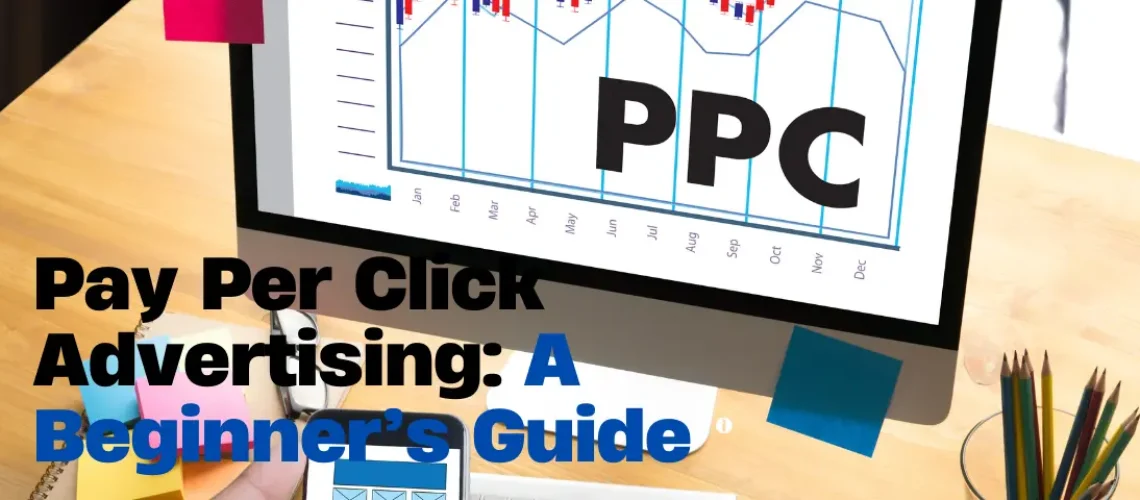Pay-Per-Click advertising is a powerful digital marketing strategy. If you have ever clicked on an ad, say a Facebook Ad, Instagram Ad or Google Ad, that captured your interest, you have engaged with the Pay-Per-Click (PPC) world.
Pay-Per-Click advertising can be a powerful tool for anyone involved in the digital world and not just those in marketing.
Whether you’re a small business owner, a creative freelancer, or just someone who wants to learn a new online skill, it is a marketing tool you will need at some point.
In this beginner’s guide, we will walk you through the ins and outs of PPC advertising.
You will understand how it works and how you can use it to achieve your marketing goals.
What is Pay-Per-Click Advertising?
Pay-Per-Click (PPC) advertising is a marketing strategy where advertisers pay a specific amount each time someone clicks on their ad.
Think of it like this: you put up an ad targeting potential customers, and you only pay when someone interacts with it by clicking through.
It allows you to bid on keywords related to your business and have your ads displayed on search engines and other platforms.
But how does it work? Let’s break it down step-by-step:
1. Auction Time
Advertisers bid on keywords, the phrases people might search for online.
This bid, called the cost per click (CPC), determines how high your ad ranks in search results or on other platforms like social media.
The higher the bid, the greater the chance of your ad being seen.
Get 50% Discount to Master ALL Aspects of Digital Marketing That Can Earn You $2,500 - $5,000 a month (Even if you are a complete beginner!)
Our students that intentionally implement what they learn from our digital marketing course make back the entire course fee within a single month or more after completing our course because our course gives them many income generating options with unlimited earning potential with no age or location barrier. The best part is no technical skills are required.
An opportunity to change your lifestyle and make money working from anywhere in the world. The results our students get from our digital marketing course prove this could be applied to any market or country and that it is designed for any skill level and work background.
*By signing up, you agree to our privacy policy and terms of service.
2. Targeting the Right Audience for Pay-Per-Click Advertising
PPC platforms offer sophisticated tools to target your ads to specific demographics, interests, and even online behavior.
Think of it like tailoring your message to the right crowd at the right time.
3. Crafting Click-Worthy Ads
You need to craft compelling ad copy that grabs attention and entices people to click.
It’s like writing a mini-story in a few lines, showcasing the benefits of your product or service in a way that resonates with your target audience.
4. Click, Pay, Repeat
Once someone clicks your ad, you pay the set CPC. But here’s the beauty of PPC: you only pay for qualified clicks, meaning people who are actually interested in what you offer.
No more wasted impressions on people who just happened to glance your way.
Why is Pay-Per-Click Advertising Important?
Pay-Per-Click (PPC) advertising is important for several reasons, including:
1. Cost-effectiveness
PPC is considered a cost-effective way to build and manage campaigns in-house without requiring a large investment.
2. Measurability and trackability
PPC is both measurable and trackable, providing advertisers with budget flexibility and the ability to allocate resources based on campaign performance.
3. Targeted reach
PPC allows businesses to target specific audiences and reach potential customers who are actively searching for their products or services.
4. Budget flexibility
Advertisers can allocate a budget for PPC campaigns and set maximum spend ahead of time, ensuring they don’t go over their budget.
5. Ad quality
Google evaluates the Quality Score (QS) of ads based on their relevance and rewards the highest-quality ads, meaning the ads that are most popular with users.
6. Quick results
PPC offers quicker results than an SEO campaign, making it a fast and effective strategy to get results.
By leveraging these benefits, businesses can effectively use PPC advertising to reach their marketing goals, demonstrate success, and gain more control over their web page’s appearance in search results.
Who Can Benefit from Pay-Per-Click Advertising?

Though the term, Pay-Per-Click might sound exclusive, it benefits everyone in the digital world.
Entrepreneurs
Pay-Per-Click advertising lets you test the waters and reach your target audience even with a lean budget.
Furthermore, you can target specific keywords relevant to your niche, attract qualified leads, and measure your results with laser precision.
Local Businesses
It lets the Brick-and-mortar businesses dominate their local search results, putting their doorsteps within reach of customers searching for what they offer.
Imagine your charming bakery popping up at the top of searches for “best bakery in town.”
E-commerce
Whether you’re selling handmade beads or sleek gadgets, PPC is your online shop window. If you target specific products to the right audiences and watch those “add to cart” clicks roll in.
In addition, you can track conversions and optimize your campaigns to squeeze every drop of profit from your clicks.
Business to Business (B2B)
B2B businesses can benefit from PPC advertising. They can target decision-makers with niche keywords and tailored ad copy, showcasing their expertise and solutions.
Non-Profit Organizations
PPC can help NGOs spread the word about their good cause! They can raise awareness and attract donations by targeting relevant keywords and crafting compelling ad copy that resonates with their mission.
Every click becomes a potential supporter, every conversion a step towards a better world.
To learn more about how to run paid ads on any platform, register with digital marketing skills to learn the skills
How does Pay-Per-Click Advertising work?
It all starts with an auction. You, the advertiser, choose specific keywords relevant to your product or service. These are the search terms potential customers will use to find you online.
Based on these keywords, you set your cost per click (CPC) – the amount you’re willing to pay every time someone clicks your ad. Then, platforms like Google Ads or Facebook Ads hold these invisible auctions, analyzing your bid, the relevance of your ad to the chosen keywords, and even the quality of your landing page (where the click takes the user).
Based on this score, your ad is assigned a rank in the search results or social media feeds. The higher your rank, the more likely your ad will be seen by those treasure-hunting users.
Finally, If someone clicks your ad, you pay the set CPC. No click, no payment – it’s that simple.
But remember, every click is a potential customer, a step closer to that sweet conversion goal.
But wait, there’s more!
PPC isn’t a one-click-and-done deal. It’s about constant optimization and learning:
Track and Tweak:
Platforms provide detailed analytics, showing you how your ads are performing, which keywords are generating clicks, and which ones are draining your budget.
You can use this data to refine your keywords, adjust your bids, and improve your ad copy to attract even more qualified clicks.
A/B Testing:
Try different ad variations, headlines, and calls to action to see what resonates best with your audience. The more you test and learn, the more clicks you’ll earn for your buck.
Budgeting:
Set your daily or monthly budget to control your spending.
Remember, PPC is a flexible tool, so you can adjust your budget as needed, scaling your campaigns up or down based on your goals and performance.
Types of Pay-Per-Click Ads
PPC is only about text ads. The world of Pay-Per-Click advertising offers a variety of ad formats, each with its own flavor and audience.
1. Search Ads:
These are text-based ads that appear at the top of search results or alongside them.
A simple example of a search ad is a local bakery in your neighborhood crafting irresistible “red velvet cake or banana cake” ads which will propel people to click on and order for them or go to shop to buy them.
The ad is simple, effective, and tempting.
2. Display Ads
Display Ads are vibrant visuals and persuasive headlines splashed across websites and apps.
They’re perfect for building brand awareness and driving traffic to your website.
The eye-catching visuals make people want to see more and so, they click on the ad to get more information.
3. Shopping Ads:
Shopping ads are a digital window-shopping paradise. These product-specific ads, complete with images, prices, and merchant details, appear directly in search results.
Imagine a tech enthusiast searching for “latest smartphones” and shopping ads showcasing sleek new phones with competitive prices coming up.
The person will browse through them to find the one to buy.
This will lead to sales.
4. Remarketing Ads
Have you ever browsed a website, left without buying, and then you are being “followed” by their ads everywhere you go online?
That’s the power of remarketing ads.
They remind users who’ve interacted with your brand in the past, gently nudging them back to complete their purchase or explore other offerings.
5. Social Media Ads
Facebook, Instagram, Twitter – these social media platforms are fertile ground for targeted PPC ads.
With tailored formats like newsfeed posts, stories, and sponsored messages, you can connect with your ideal audience on them.
Imagine a fitness influencer promoting his workout app through engaging Instagram stories showcasing workout routines and transformations.
People who click on the stories will go on to download the app and he will also gain loyal fitness followers.
How to Optimize Pay-Per-Click Ads
1. Keyword Targeting
Analyze which keywords generate the most clicks and conversions. The relevance of the keyword to your business, product or service is important.
For instance, an online furniture store might see high click-through rates on generic terms like “sofa,” but those clicks might come from interior decoration enthusiasts and not actual buyers.
So refining the keyword to “luxury leather sofas” could attract a more targeted audience who are ready to buy.
2. Bidding
Analyze your CPCs and adjust them strategically. For high-converting keywords, bid a bit higher to secure top positions.
For keywords still in the testing phase, consider lower bids to gather data before investing heavily. This fine-tuning ensures you’re paying the right price for the right clicks.
3. Ad Copy
A compelling ad copy is needed to catch the attention of people.
You need to craft headlines that grab attention and communicate your value proposition.
You can use bullet points and action verbs to highlight benefits and entice clicks.
Make your ad copy irresistible!
An example is, instead of a travel agency using a bland headline that simply says, “Book your vacation,” they could try “Escape the ordinary: Explore Lagos’ hidden beaches – Book your paradise now!”
4. Landing Page
Ensure your landing page seamlessly matches your ad and delivers on its promises.
Keep it relevant, clear, and user-friendly.
Furthermore, guide visitors towards conversions with simple calls to action, like “Book Now” or “Get Your Free Quote.”
5.A/B Testing
It is important not to guess but to test your ads.
Try different ad variations, headlines, and calls to action to see what resonates best with your audience. Track the results with laser focus and experiment like a scientist.
In addition, this continual A/B testing helps you uncover hidden gems that convert.
6. Budget
Set realistic budgets and track your spending. Use automated bidding tools to optimize your budget allocation based on performance.
This ensures you’re not draining your wallet on unproductive clicks and keeps your campaigns running smoothly.
7. Track, Analyze, Repeat:
Data is your compass in PPC advertising because it gives you direction.
Regularly analyze your campaign performance, track conversions, and identify areas for improvement.
Don’t be afraid to tweak your strategies based on what the numbers tell you.
To learn more about how to run paid ads on any platform, register here to learn the skills
Advantages and Disadvantages of Pay-Per-Click Advertising?

PPC can be a potent marketing tool, but like any tool, it has its strengths and weaknesses.
Let’s dissect the advantages and disadvantages to help you decide if it’s the right fit for your marketing plans:
Advantages of Pay-Per-Click Advertising
1. Targeted Reach
It allows focus your ads on specific demographics, interests, and online behavior, maximizing your marketing budget’s impact.
2. Measurable Results
Pay-Per-Click lets you track every click, conversion, and money spent with pinpoint precision. Pay-Per-Click allows you to constantly refine your campaigns for better results.
3. Fast Results
PPC puts your brand in front of potential customers instantly. In addition, every click in PPC are potential customers, so the faster you reach them, the faster you can convert them.
4. Flexibility
You can adjust your budgets, target audience, and keywords any time you need to based on the ads’ performance. You can experiment with different ad formats and tweak your bids.
This agility allows you to adapt to market changes and optimize your campaigns for maximum impact.
Disadvantages of Pay-Per-Click Advertising
1. Cost per Click
You pay for every click, even if those clicks don’t lead to conversions. If someone clicks on your ad but does not take action, you will still pay for the click.
2. Steep Learning Curve
Mastering PPC can take time and effort. Understanding keyword research, campaign optimization, and bidding strategies requires dedication and ongoing learning.
One way to combat this disadvantage is to take courses to help you learn faster. For instance, Digital Marketing Skill Institute has a variety of courses and training that will help you.
3. Competition
The PPC landscape can be crowded, especially for popular keywords. Bidding wars can drive up costs, making it challenging to stand out from the noise.
So you need to research, target the right niche, and write compelling ad copy in order to compete well.
4. Limited Brand Building
While PPC excels at driving targeted traffic and immediate conversions, it’s not the best tool for long-term brand building.
You may need to combine PPC with organic SEO strategies to cultivate brand awareness and loyalty alongside generating immediate leads.
Is Pay-Per-Click Advertising Better than SEO?
To decide which is better is like choosing between eating noodles and a slow-cooked gourmet meal prepared by a Chef – both can satisfy your hunger but in different ways.
1. Pay-Per-Click advertising provides instant visibility while SEO provides sustainable result
2. Pay-Per-Click advertising provides laser targeted reach
3. It is easy to track and measure performance with Pay-Per-Click advertising while SEO is quite slow in measuring results
4. SEO is ideal for building long term brand awareness which Pay-Per-Click advertising lacks.
5. SEO is mostly free with readily available tools to use but Pay-Per-Click advertising needs to be paid for.
The truth is, there’s no one-size-fits-all answer to this question. Pay-Per-Click advertising and SEO are not rivals, but rather complementary tools in your online marketing arsenal.
The best approach is to combine both strategies thereby leveraging the strengths of each:
1. Use Pay-Per-Click advertising for short-term campaigns, targeted lead generation, and brand awareness boost.
2. Employ SEO for long-term visibility, organic traffic growth, and sustainable brand building.
Conclusion
Pay-Per-Click advertising is not simply paying for clicks, it’s much more than that. It’s a strategic investment in targeted reach, measurable results, optimized ROI, and long-term brand building.
In today’s competitive online environment, PPC advertising is a vital tool for businesses of all sizes to thrive in the digital space. However, it does not provide long term brand awareness.
FAQs
How do I start Pay-Per-Click Advertising?
It is always good to start with the basics. Research PPC platforms like Google Ads or Bing Ads, understand keyword research and targeting and familiarize yourself with different ad formats.
However, many platforms offer comprehensive beginner guides and tutorials to get you started.
How effective is pay-per-click advertising?
PPC advertising is extremely cost-effective, and you only pay when people actually click on your ads. However, it offers a measurable and trackable way to reach a targeted audience, generate leads and sales, and ultimately increase brand awareness.
What are ads that pay-per-click?
Ads that pay-per-click are an advertising model where you only pay when someone clicks on your ad. It’s most recognizable in search engines like Google and Bing, but you can also encounter the PPC model in social media advertising.
Can you make money on pay-per-click ads?
Yes, you can make money on pay-per-click ads. By creating effective ads and targeting the right audience, businesses can generate leads and sales, and ultimately increase revenue.
Is Facebook Ads a Pay-Per-Click Advertising?
Yes, Facebook Ads are a form of pay-per-click advertising. Advertisers can target specific audiences based on factors such as demographics, interests, and behaviors, and they can be charged on a cost-per-thousand-impressions (CPM) or cost-per-click (CPC) basis.
Is Google Ads Better than Facebook Ad?
The effectiveness of Google Ads and Facebook Ads depends on the business’s goals and target audience. Google Ads is generally better for businesses looking to drive traffic and sales, while Facebook Ads is better for businesses looking to build brand awareness and engage with their audience
Related Posts
Online advertising in Nigeria: Different forms of online advertising
6 Effective Online Marketing Strategy To Target Your Audience
Google Ads Guide – What Google Ads Mean And How It Works
How To Get Customers Online | 15 Ways To Find More Clients For Your Business






